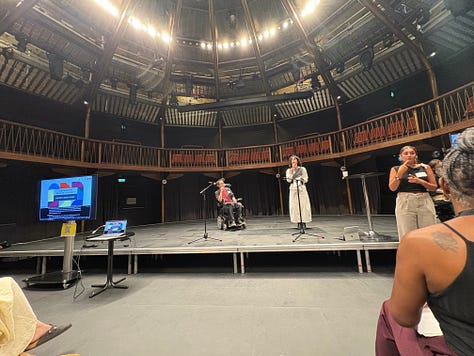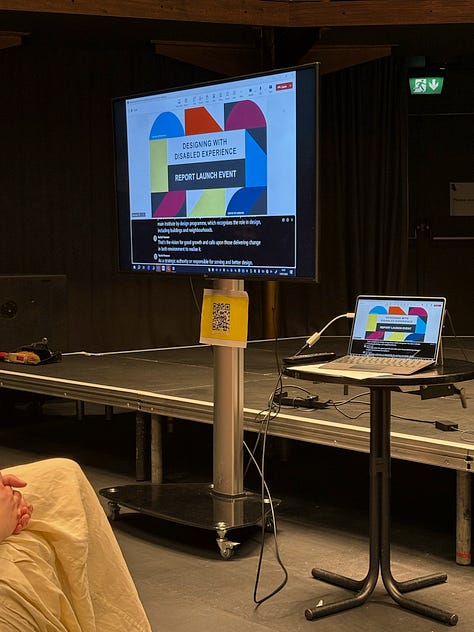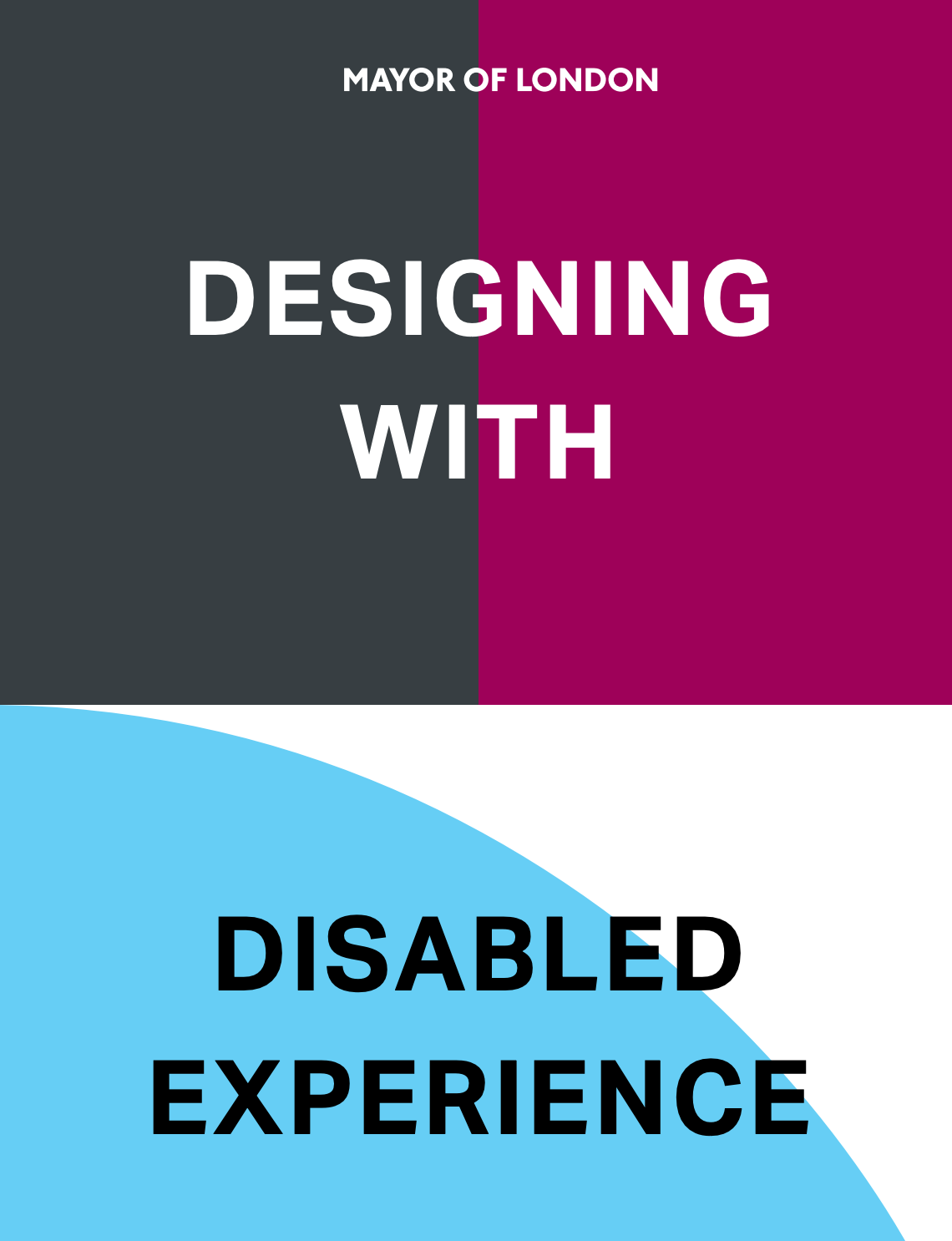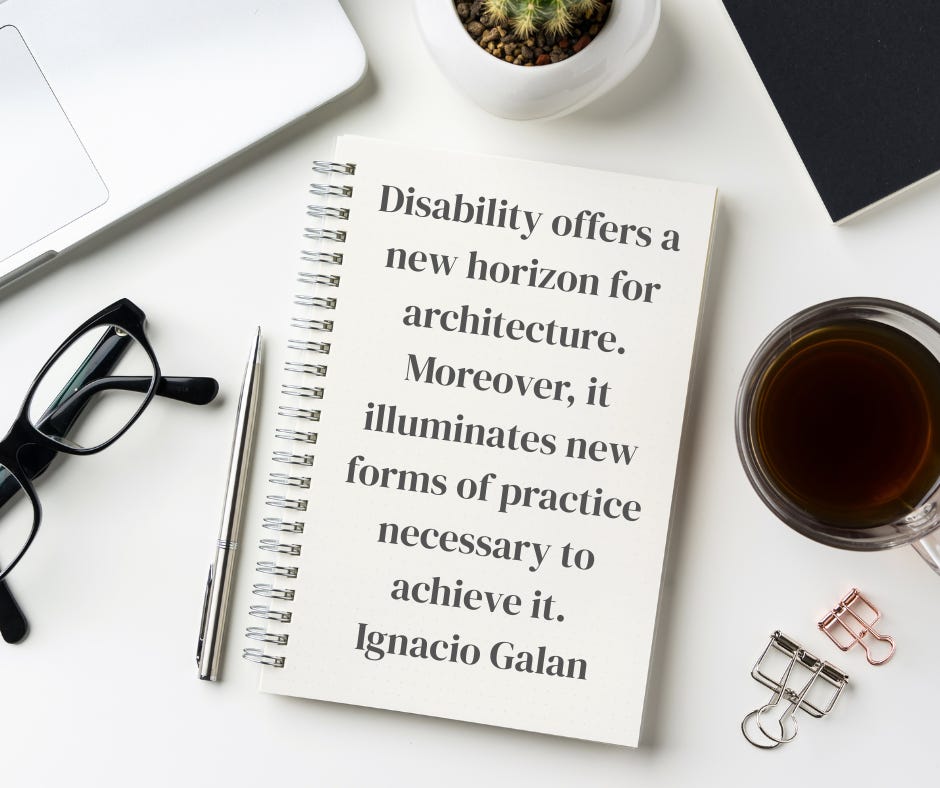Groundhog Day for Accessibility
Network Rail’s design choices leave whole communities excluded and public resources wasted.
You can listen to the main article in this newsletter here:
One of the biggest myths in accessibility is the notion that newly built projects are automatically accessible. Well, Network Rail seems to be on a mission to prove this myth wrong over and over again.
A “groundbreaking” new footbridge is set to span the railway line between Kennington’s Crown Hill View and Conningbrook Lakes in Ashford. With groundbreaking, I mean new barriers from the ground.
Labelled by Network Rail as a safer, sleeker, cost-effective alternative to the current dangerous level crossing, the project’s fundamental flaw has gone overlooked: it will be inaccessible to many disabled people and countless others who rely on step-free access when moving from one side of the tracks to another. That sounds like Groundhog Day?
It is. Network Rail had to cancel plans for a similar footbridge in Copmanthorpe after disabled people took legal action.
Safety… At What Cost?
While nobody debates the necessity of improving safety - a level crossing surrounded by expanding housing poses clear risks - the decision to replace one barrier with another is indefensible in 2025. Network Rail’s revised design abandons the more costly ramped option, settling instead for a stepped-only solution. Their stated reason: budget constraints and “responsibility to spend taxpayer money appropriately.”
Interestingly, I just completed my tax return yesterday, and I find comments like this quite offensive. Last time I checked, disabled people, families and older people who struggle with steps are taxpayers too, and I would like to see my taxpayers’ money spent in an inclusive way, not in a way that funds access for young people without buggies who can walk.
The group they are excluding with these projects gets bigger and bigger. And it is even more concerning because this bridge links housing projects. Are the new housing plans only for non-disabled people? The footbridge will offer a narrow wheeling ramp only for bikes, not for wheelchair or mobility scooter users, nor for parents with buggies, nor for older people with limited mobility.
This is not an isolated incident: Network Rail has a recent track record of building footbridges across the UK that exclude disabled people entirely and even calls these new bridges “innovative”. It is an appalling contradiction of promises on accessibility and equity.
Legal and Social Failure
Network Rail’s reliance on cost savings all the time, as well as the claim that future upgrades might someday provide lifts, simply bakes in inaccessibility for decades. It tells disabled people they're an afterthought, only to be accommodated if funds miraculously appear or pressure mounts.
It’s also a dishonest claim. It means they don’t have enough money to build the bridge. If you can’t deliver accessibility, you can’t deliver a decent project from the start. That’s not groundbreaking or innovative; that’s appalling. It’s poor planning. It is, in fact, a waste of taxpayers’ money. Nothing gets saved by delivering bad-quality projects.
It means that entire communities - including older residents, disabled people and families - face detours or even full exclusion from public spaces and active travel routes intended to improve connectivity and well-being.
The Real Cost of Exclusion
Flimsy justifications about cost savings mask the reality: inaccessible infrastructure costs cities, towns and their residents in the long run. Research consistently shows that truly accessible infrastructure delivers significant health, environmental, and mobility benefits, reducing congestion and boosting local economies for all.
And what happens next?
Well, let me look into my crystal ball. There will be legal action again. Imagine how much money Network Rail could save by not constantly planning against disabled people and fighting legal cases, but instead using the money to provide access. That’s what I would appreciate. As a taxpayer.
Some interesting links
The UK Government has been urged to support an amendment to ensure that public EV charging infrastructure is accessible for disabled drivers.
“True customer experience excellence doesn’t mean saying yes to every request. It means designing a system that supports consistency, clarity, and care for both the customer and the team.”
The Rail Accident Investigation Branch has launched an investigation into a near miss involving a manual boarding ramp at Norwood Junction station on the Windrush line.
Something to read
I recently joined the launch of the Greater London Authority report “Designing with Disabled Experience” - a new report exploring how inclusive, creative, and equitable design can be embedded across London.



Grounded in lived experience, the report calls for a shift from minimum standards to meaningful, justice-led design practices.
Some final words
The Accessible Link is a reader-supported publication. So, if you like what you’re reading, consider to…
Who is writing this newsletter?
I’m Christiane Link, and I improve the customer experience in aviation, transport, and travel. I worked as a journalist for over two decades and travelled extensively for business and leisure. I’m a wheelchair user.
Work with me
Whether you're a Customer Service Director, a Head of Customer Experience, a corporate Accessibility Manager, a DEI leader, a transport planner, or a member of a disabled employee resource group, I can help you make your organisation more inclusive. You can book me for speaking engagements or hire me as a consultant for your accessibility or DEI strategy, communications advice and other related matters. I have worked for airlines, airports, train operators, public transport providers, and companies in other sectors.
If you want to read more from me, follow me on LinkedIn, Twitter, Bluesky or Mastodon. You can also reply to this email if you want to contact me.
.




